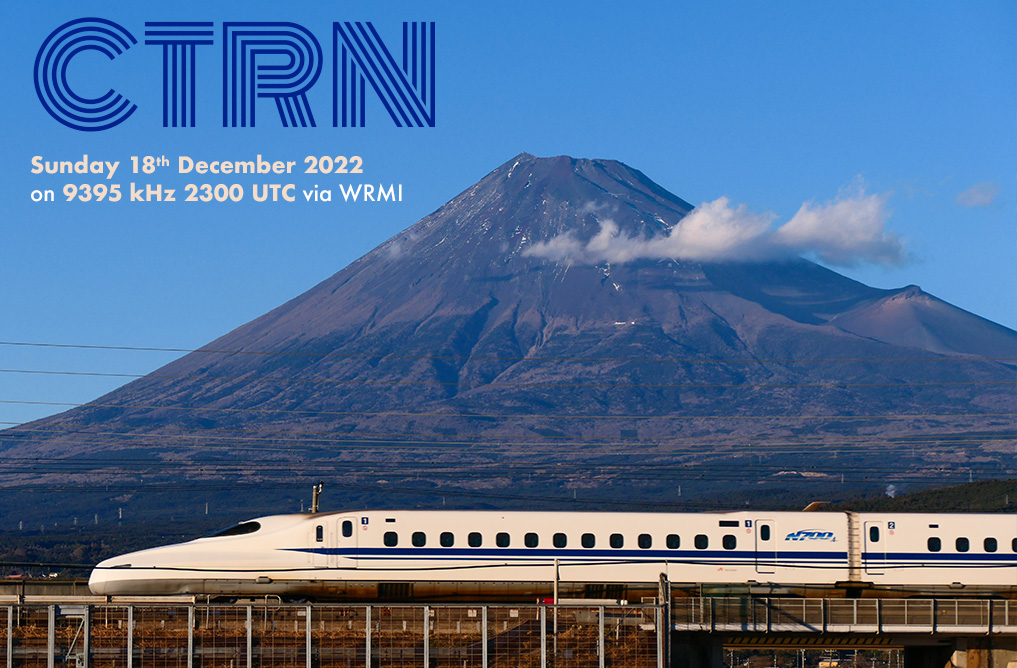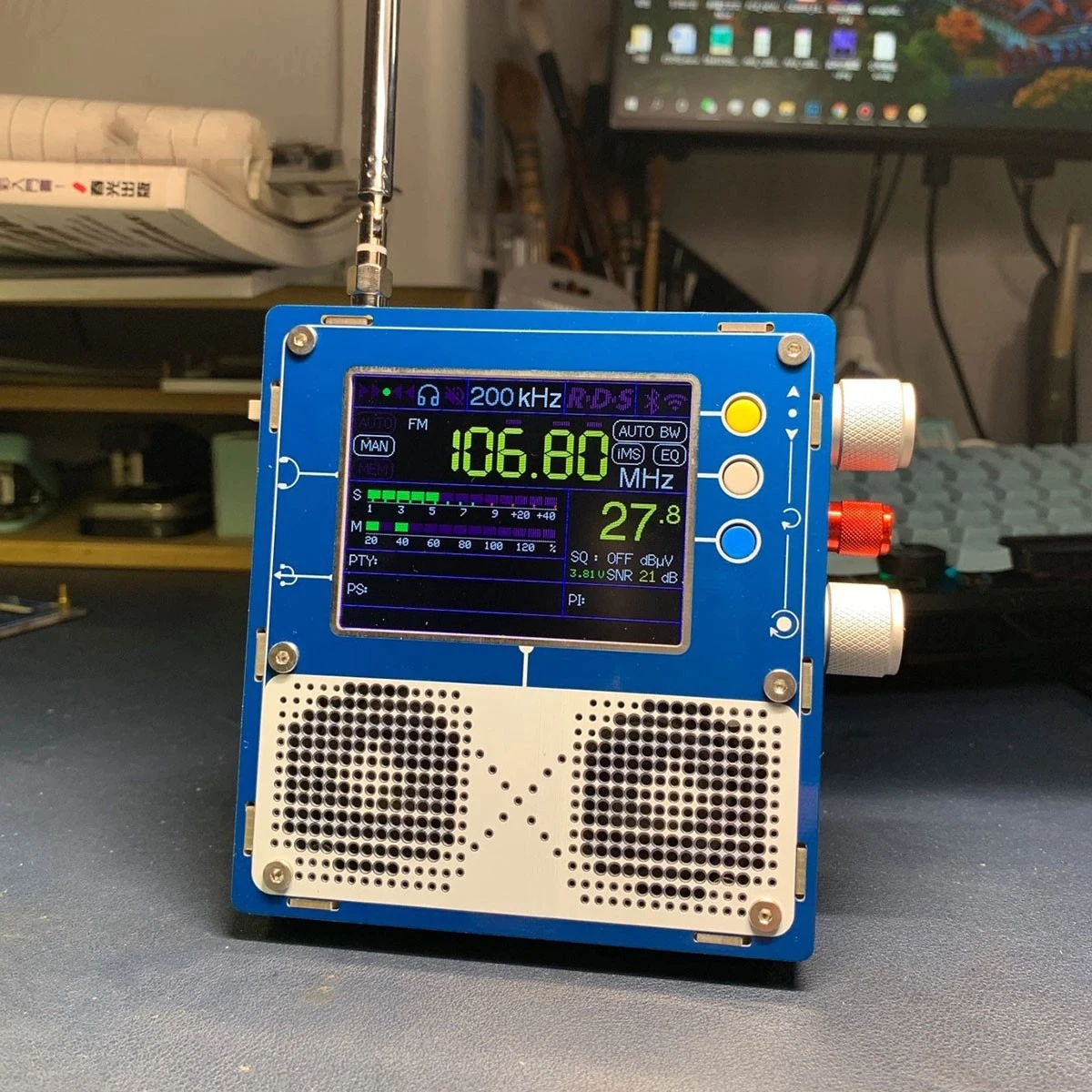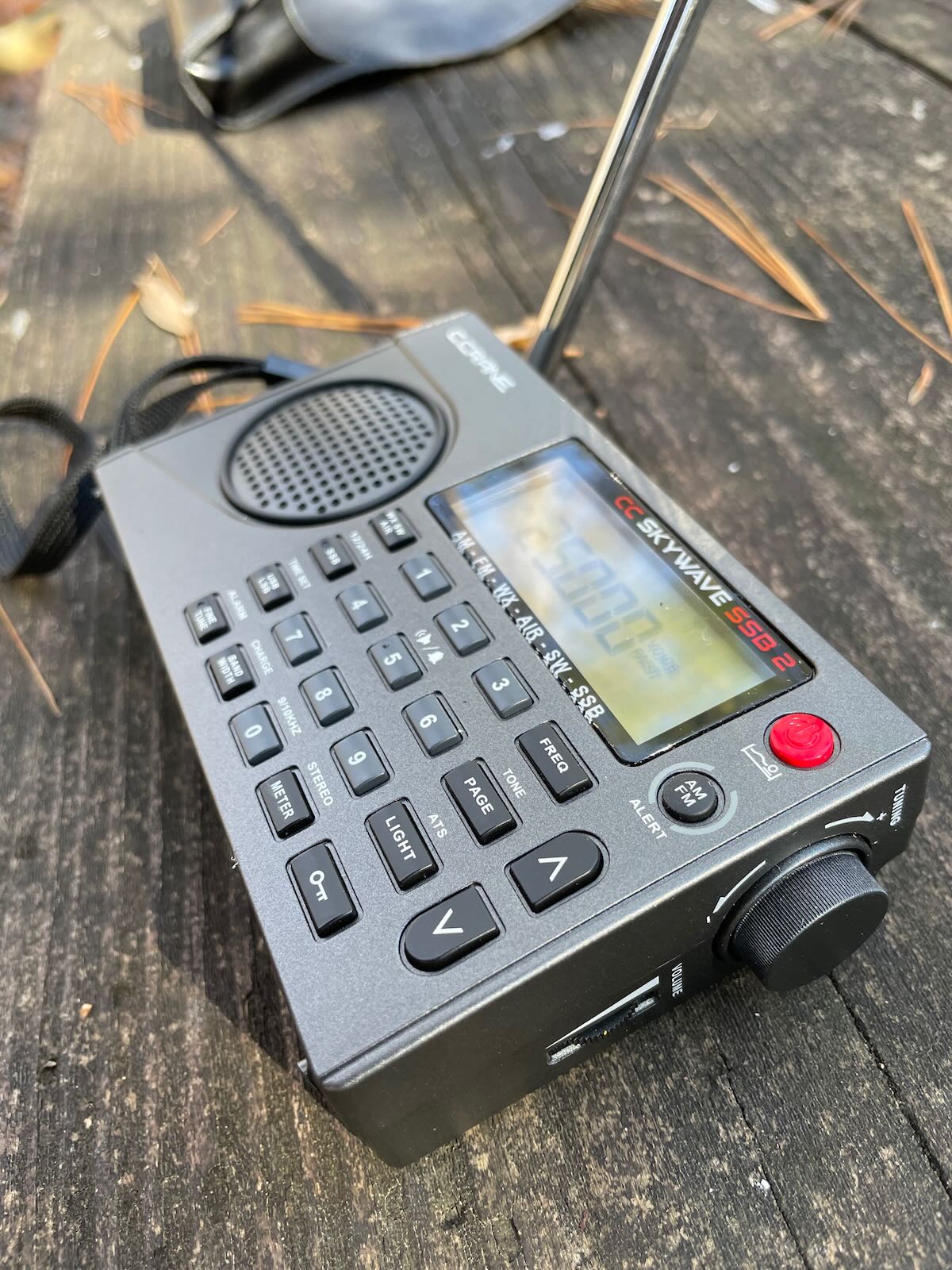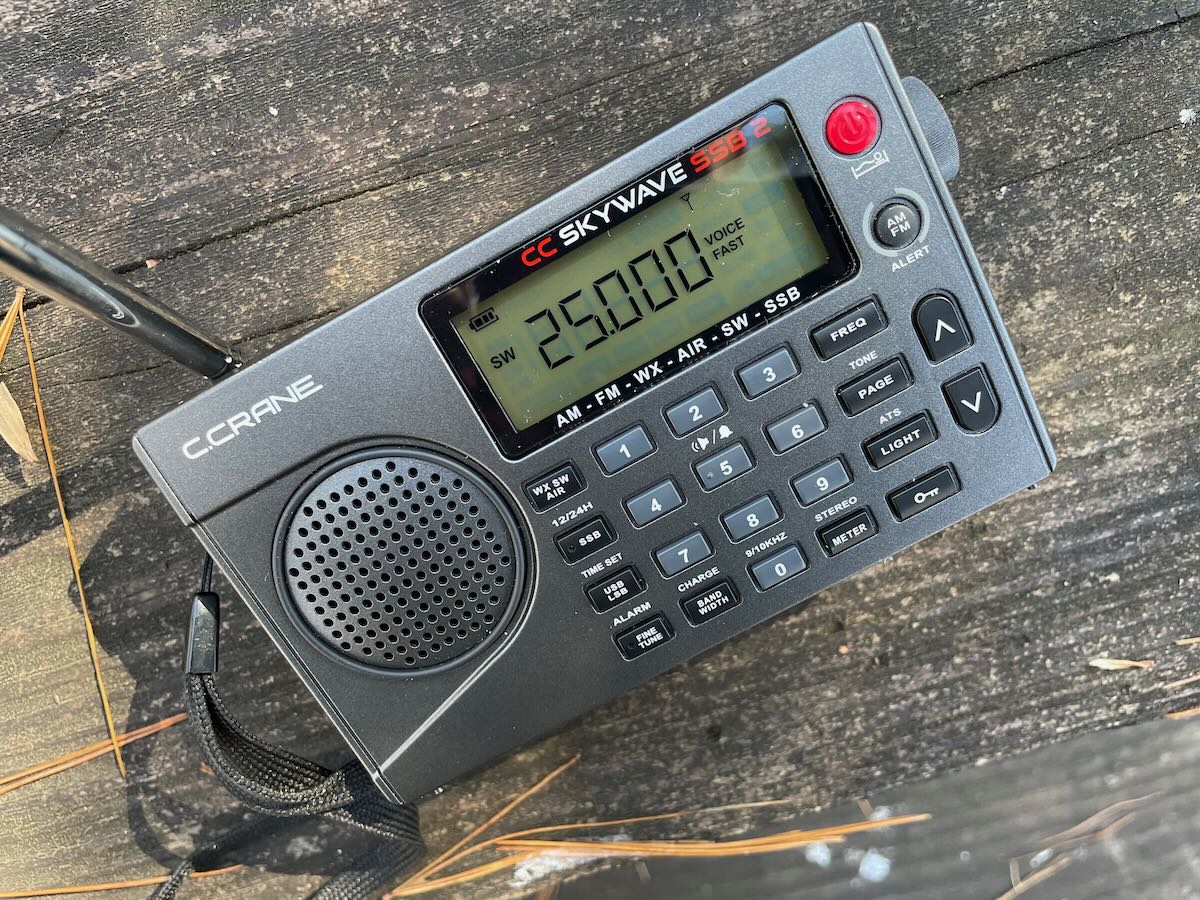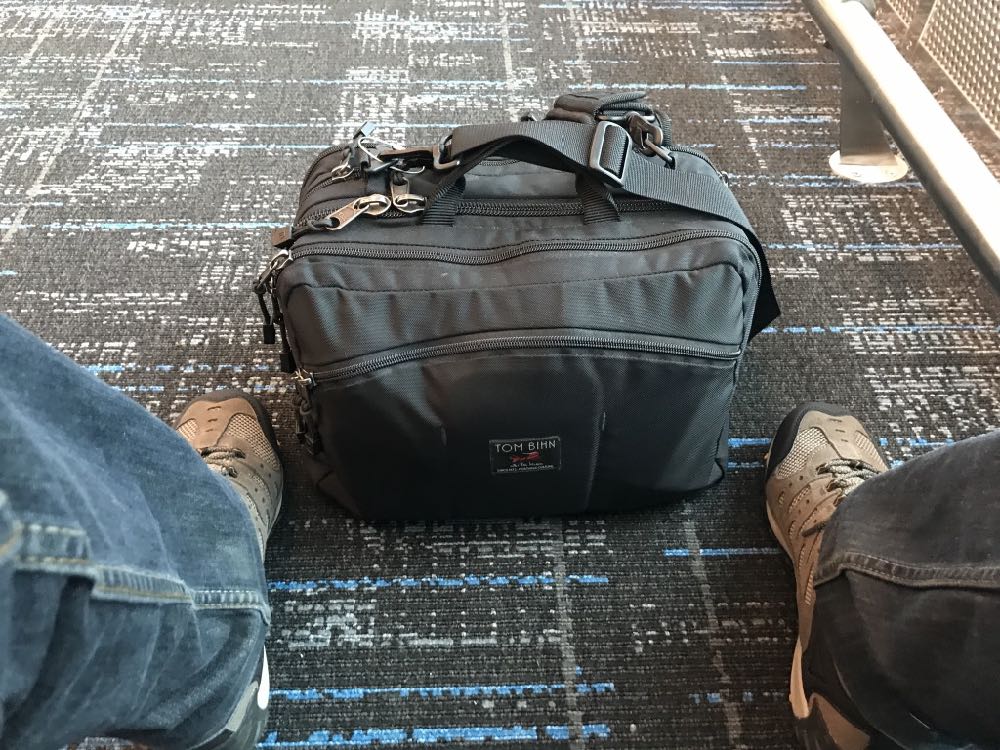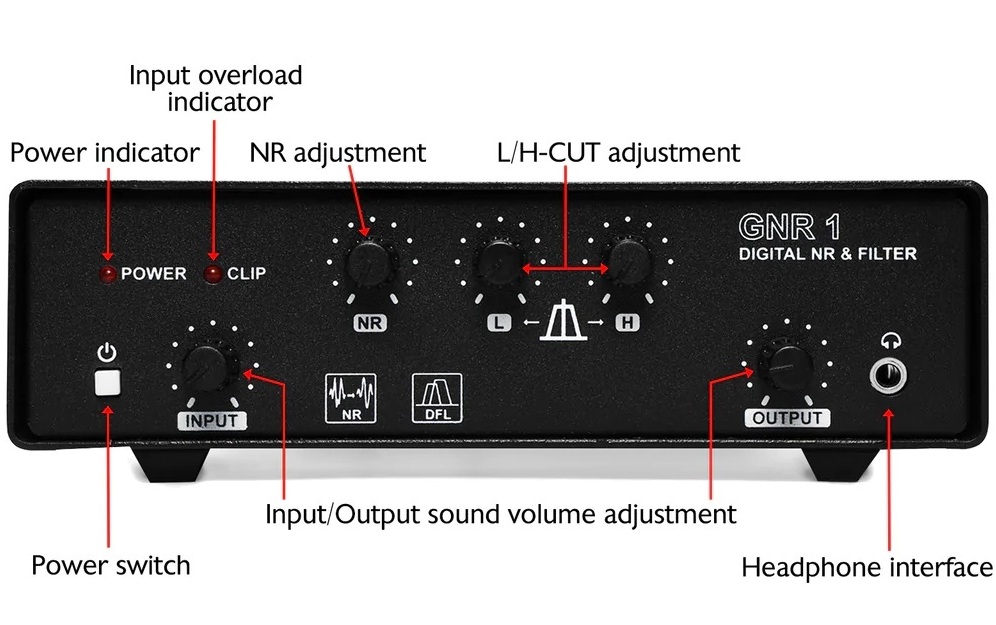
By Jock Elliott, KB2GOM
Call me a retro-crank, an old-schooler, but part of the joy of listening to shortwave is that the signals sound like they have come from far away. There is nothing like hearing the music, the news, the commentary “filtered through the shortwaves” . . . as Edward R. Murrow once put it.
At the same time, I am a content DXer (thanks David Goren for that phrase; it fits perfectly what I do). Merely hearing some scratchy, barely audible signal won’t scratch the itch; I want to hear what is being broadcast clearly enough to make sense of it.
And when something particularly catches my ear, there are times when I would like to minimize the noise.
That’s where the Xiegu GNR1 Digital Audio Noise Filter comes in. According to the Radioddity website (they loaned me the unit for testing) — https://www.radioddity.com – “The Xiegu GNR1 digital audio noise filter is an audio processing device integrating digital noise reduction and digital filtering. It can be widely used in the external audio processing sector of all types of wireless receiving equipment such as radio transceiver, receiver, radio, to effectively reduce the background noise, improve the signal-to-noise ratio, and improve the signal identifiable degree.”
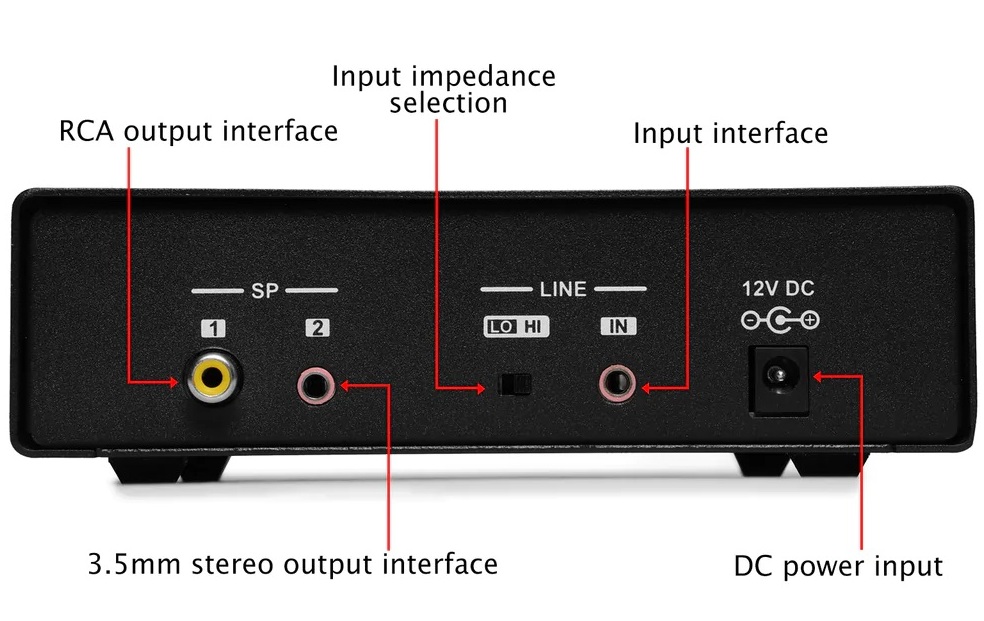
What I found is a mixed bag. I had some difficulty getting the unit to work at first when I plugged my headphones into the headphones jack on the front panel. Once I plugged the phones into the SP #2 jack on the rear panel, I found the GNR1 will, indeed, reduce the noise on a relatively “fat” shortwave broadcast signal, rolling off the static with no digital artifacts and making the signal more pleasant for long-term listening. And you can use the high cut filter and low cut filter to tailor the sound to suit your ears, and they work quite well for that purpose.
On weaker signals, however, the GNR1 did not provide as much help in reducing noise or sometimes could not hear the signal at all.
For example, at my location east of Troy, NY, I can hear the Canadian time station CHU on 3330 nearly all the time. Today I could hear the time “pips” but down in the noise. I plugged in the BHI Compact In-Line Noise Eliminating Module (which I reviewed elsewhere), and I could hear the time station better, along the with the trickling water sound that is an artifact of the BHI noise reduction algorithm. But with the GNR1, it was as if the CHU time station had disappeared, no matter what adjustments I made to the device.
Bottom line, I can provisionally recommend the GNR1for reducing noise with no artifacts and tailoring audio on strong shortwave broadcast signals, but not for weak signals.
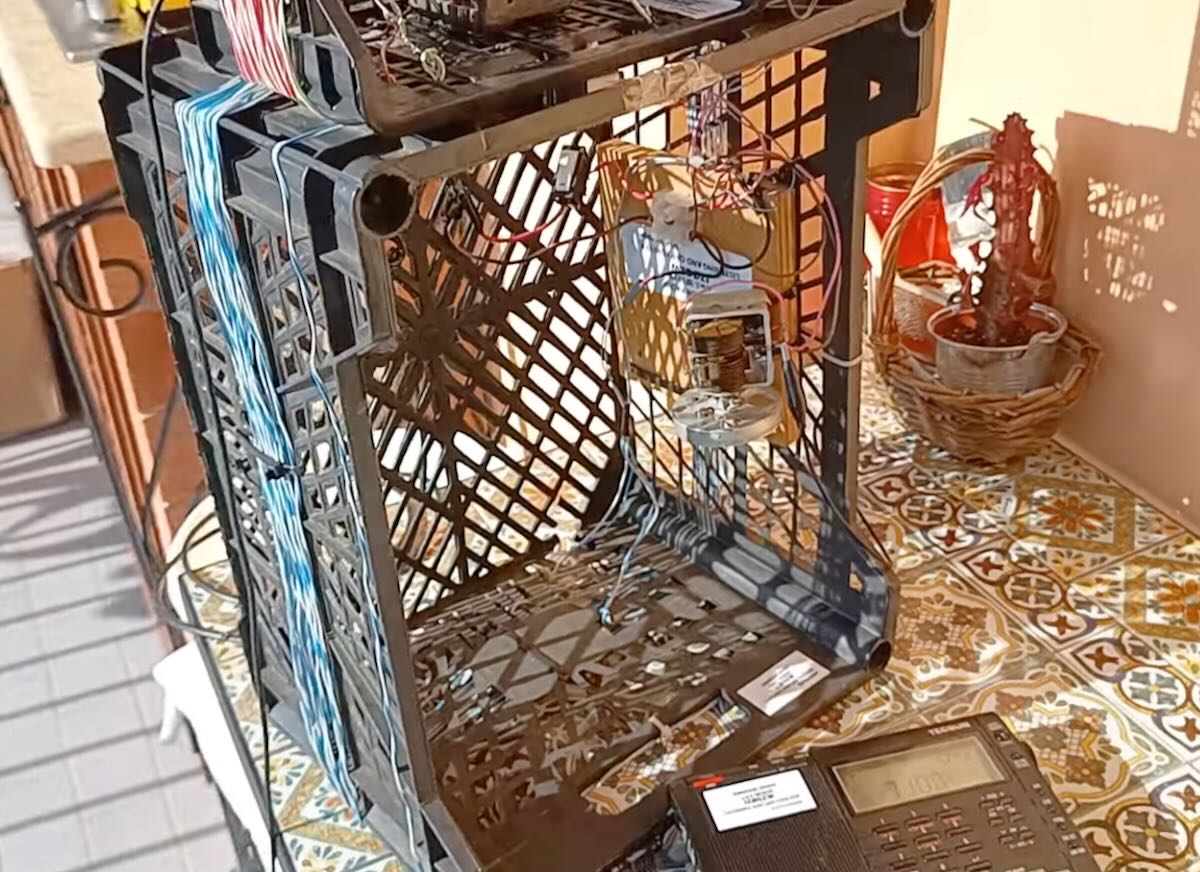 Many thanks to SWLing Post contributor, Giuseppe Morlè (IZ0GZW), who writes:
Many thanks to SWLing Post contributor, Giuseppe Morlè (IZ0GZW), who writes:
